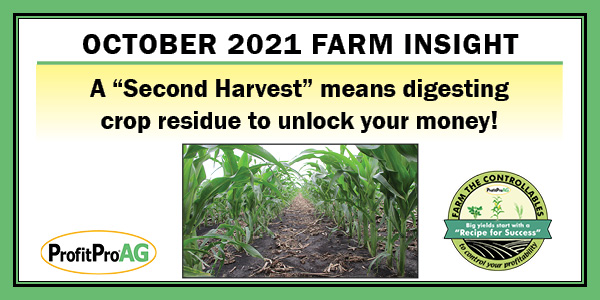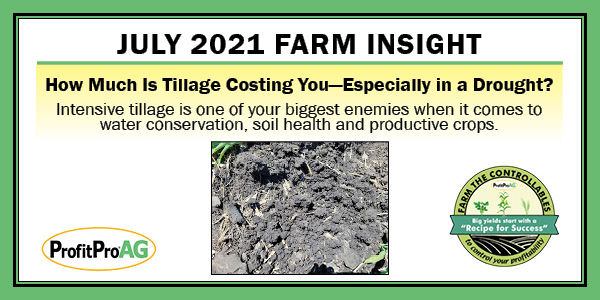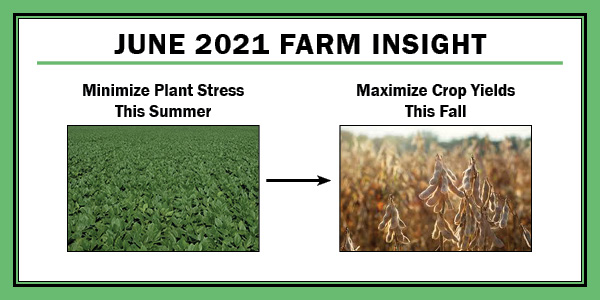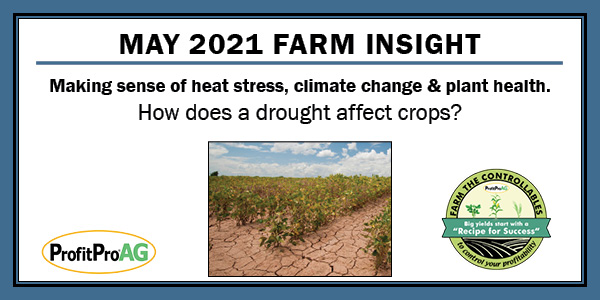In-Season “Stay Green”

Reeling from fertilizer sticker shock? In some areas, fertilizer prices have skyrocketed more than 300%. Delivery times are anyone’s best guess. What’s your next move? Plant less corn next spring? Cut back on fertilizer to save money? Critical mistakes are easy to make at times like this. Here are 3 things you should never do if you want to control your fertilizer costs in 2022.
At-Plant “Jump Start Yield”

Nitrogen fertilizer prices are shattering records. Supply chain challenges are getting worse. Inflation and shortages are becoming the norm. What’s your next move? Plant less corn next spring? Cut back on fertilizer to save money? It’s time to control the controllables on your farm and get the soil microbes going so you can access the free fertilizer that’s already in your fields. Free fertilizer? Yep, you’ve got it. Click here to learn how to maximize it.
Residue Management “Second Harvest”

With the threat of rising fertilizer prices, it’s essential to maximize the free fertilizer you have in your fields already. Where’s that fertilizer, you ask? It’s locked up in your corn residue. Tough, “super stalks” are often part of raising insect-resistant, high-yielding corn with modern seed genetics. The stalks’ slow decomposition, however, can create big headaches, especially if you plant continuous corn or are a no-tiller.
“I’ve seen stalks lay out there for two and a half years or more,” says Josh Knapke, a 4th generation Ohio farmer who raises corn, soybeans, wheat, hogs and cattle.
Simply slicing up corn residue and tilling it into the soil doesn’t speed up decomposition. Knapke has learned that it’s vital to bring the biology back into the soil to break down crop residue efficiently, boost soil health and unlock nutrients in the residue to nourish next year’s crop. Click here to see how residue management after harvest has become a key tool Knapke and his brother use to build soil health and boost yield potential.
Biologically Treat Manure

Crusting. Sludge. Flies. Odor. Foam. Toxic gasses. What if you didn’t have to fight these challenges with your manure pit? Yes, it’s possible. When natural systems are working properly and biological systems are in balance, manure is quite easy to manage. So why aren’t more people talking about the biology of manure management? Read on for some biology 101 that can help you cut down on solids, improve potassium and phosphorus availability, and make manure more usable.
Utilize Crop Rotation & Cover Crops

It’s no secret that cover crops offer an array of benefits. But maybe you’ve experienced a cover crop failure. Challenges like this tend to arise when cover crops are treated as an afterthought. John Urbanick, a Pennsylvania farmer and ProfitProAG client, knows you’ve got to manage cover crops, much like you manage a cash crop. John and his brother Joe have been growing cover crops for the past decade to improve their soil. Cover crops have also cut their ragweed challenges by 50%. Plus, the cereal rye in their “super scavenger” seed mix pulls in valuable nitrogen from the soil. “We’re trying to grow our own nitrogen,” Urbanick says. Click here to see how the Urbanicks make cover crops work, and learn a simple, 3-step process to help you succeed with cover crops.
Reduce Tillage Cost

Got rain? While there’s plenty of talk about praying for rain and jokes about rain dances this summer, why aren’t more people discussing tillage? How much is tillage really costing you, especially when Mother Nature turns the water off? We contend that intensive tillage is one of your biggest enemies when it comes to water conservation, soil health and productive crops. Don’t overlook 3 practical steps to help you cut tillage costs (and still break down crop residue efficiently), boost your soil’s water-holding capacity, and produce healthier, higher-yielding crops. Click here for all the details.
Minimize Plant Stress This Summer, Maximize Crop Yields This Fall

If you’re concerned about dry conditions this summer, it’s time to control the controllables that impact yield potential. There’s one thing you don’t want if you’re trying to keep crops green and healthy, and that’s ethylene. Plants produce ethylene when they’re stressed. Did you know there are ways to manage this process, so your crop can continue to grow, develop and achieve a higher yield potential? Read on for all the details.
Secrets from a Top Soybean Grower

How much did your soybeans yield last fall? Were you anywhere close to 88 bushels per acre? John Zittel achieves those kinds of yields. In fact, he’s won the New York Soybean Association’s yield contest for two years in a row. What are his secrets to successful soybean production? Hint: he’s not a fan of stressing his crops with AMS, but he is a fan of foliar feeding. See which of his proven, practical solutions might work on your farm.
Making Sense of Heat Stress, Climate Change and Plant Health

There’s been a lot of talk about the potential for drought in 2021, which can lead to heat stress in crops. But what if we’re really experiencing climate change? Let’s see what the science says. Also, no matter what Mother Nature brings this summer, there are ways to make your soil and crops more resilient. Read on to learn more.
Boost Soil & Plant Health

As fertilizer prices rise, wouldn’t it be great to cut your fertilizer bill, without sacrificing yield potential? It’s possible—and practical—when you put biology back in the soil. See how Minnesota farmer Bill Banken is working with ProfitProAG to break down crop residue effectively, build soil health, boost plant health and reduce the need for chemicals and commercial fertilizer. Learn more at “Build Soil Health to Boost Plant Health.”
